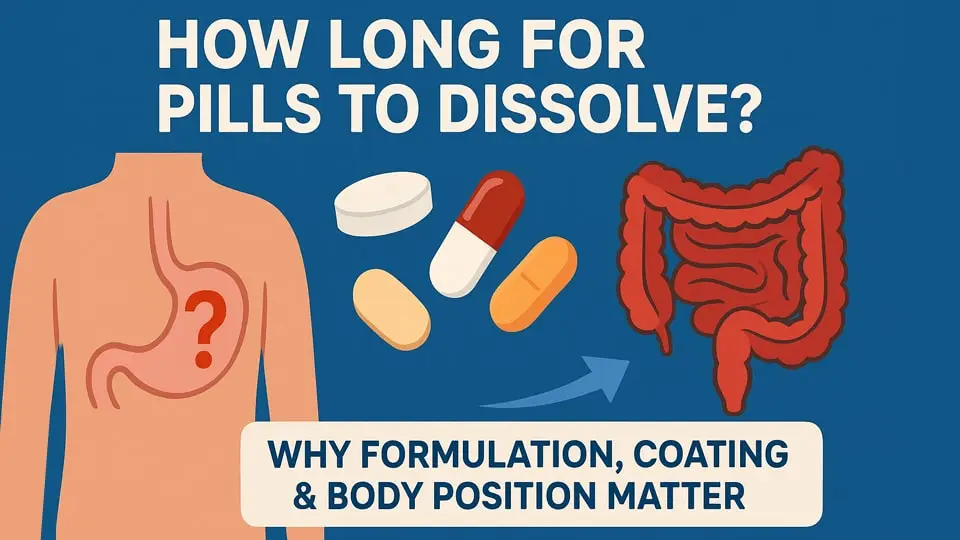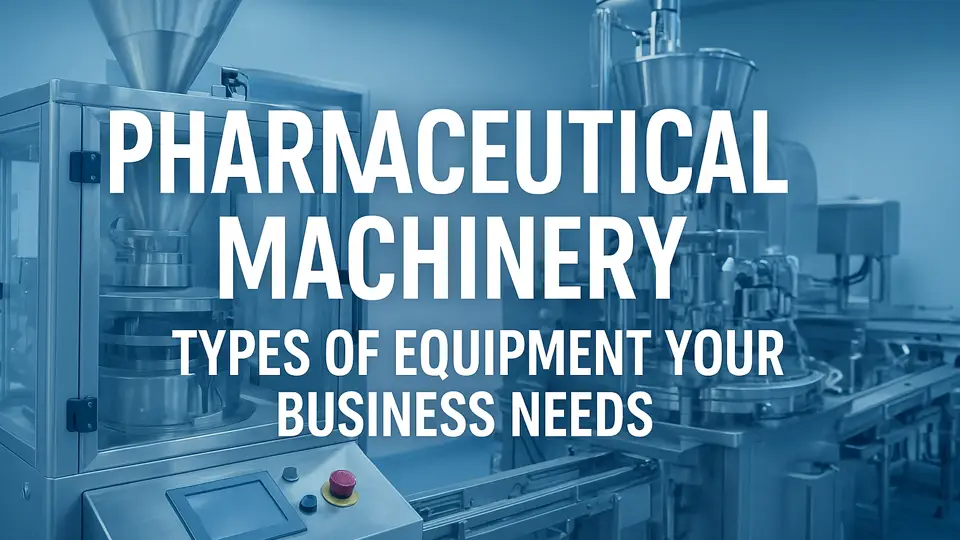
Stick Pack vs Sachet: The Ultimate Guide to Key Differences
Discover the key differences between stick pack and sachet packaging. Learn about their design, production
In pharmaceutical packaging, the demand for precise counting and high throughput is exceptionally high. Automated tablet counting machines meet this need by accurately dispensing pills or capsules into bottles with minimal error. These systems use vibratory feeders and electronic counters to ensure each container receives the correct count, improving patient safety and reducing waste. Given these stringent requirements, choosing a machine with the right combination of features is crucial for efficiency and compliance on the production line.

Achieving near-perfect counting is fundamental. Top-tier counters boast error rates of 0.1% or less (over 99.9% accuracy) per batch. They employ advanced sensors – from fast infrared/photoelectric detectors to high-speed vision cameras with AI algorithms – to detect every tablet that passes through the chute. For example, infrared sensors can scan up to 16 times per millisecond to distinguish tablets by interrupting a light beam. Other systems use electrostatic field sensors to work in dusty environments and to tell broken or half tablets apart. Some machines even use camera-based vision: a CCD camera captures each tablet image and software counts and inspects them in real time. Many designs include redundant counting paths or “TruCount” scanning systems that cross-verify counts for virtually 100% accuracy. Together with built-in checks (e.g. “no bottle, no count”, auto self-check, real-time alarms), these features ensure almost every misfeed or duplicate is caught immediately.
Altogether, these technologies keep counting errors below 0.1%, ensuring that underfills, overfills or contaminations are extremely rare.
Modern lines require extremely fast processing. To meet volume targets, look for multi-lane or multi-channel designs that multiply output. For example, some counters offer up to 32 or more parallel discharge tracks – each filling a bottle – so thousands of pills can be processed per minute. Key throughput features include:
Combined, these elements allow tablet counters to keep pace with large packaging lines – even in continuous, high-demand shifts.
A versatile counter handles many product types without extensive reconfiguration. Key flexibility features include:
This flexibility ensures a single tablet counting machine can be used across multiple products. It saves space and investment, since one machine serves many applications.
To catch errors in real-time, modern counters include on-board inspection. Features to look for:
By automating quality checks, the tablet counter becomes a final gatekeeper for accuracy. The result is higher first-pass quality and fewer recalls or complaints.
Pharma standards demand machines that are easy to clean and validate. Important hygiene features include:
These design choices not only meet GMP safety guidelines but also make routine sanitation fast and reliable. A truly pharma-grade counter will explicitly claim compliance with regulatory standards for hygiene.

Ease of operation and connectivity are key in modern equipment. Look for:
Together, these features make the counter easy to run and integrate with factory MES. Operators spend less time adjusting knobs and more time monitoring production.
Finally, consider how the machine fits into your entire line:
By choosing a counter that’s built for integration and expansion, you protect your investment. It will fit neatly into your line today and adapt to new requirements tomorrow.
Beyond the core seven features, the following “nice-to-haves” can make a difference:
When evaluating machines, follow a systematic process:
Taking these steps will help you select a tablet counting machine that truly fits your production needs and offers a fast return on investment.
In summary, accuracy, speed, flexibility, quality control, hygiene, automation, and integration are the seven pillars of a modern tablet counting machine. Each feature directly impacts production efficiency, product quality and regulatory compliance. When selecting equipment, carefully prioritize these capabilities against your operational requirements.
For more information or to see our machines in action, contact us or request a demo. Our experts can answer your questions, provide case studies, and help you find the perfect tablet counting solution for your facility. Let us help you optimize your line with the right high-performance tablet counting machine
A tablet counting machine is automated pharmaceutical equipment that precisely counts tablets, capsules, lozenges or other solid forms, then dispenses them into containers or bottles. It typically uses vibratory feeding to separate individual units, guides them along tracks, and counts them via sensors (IR, photoelectric, vision) or camera-based systems. After counting, it fills the containers and may reject defective ones. This reduces human error and increases throughput.
High-end machines aim for accuracy better than 99.9%, often targeting error rates of ≤ 0.1%. They use redundant scanning, multiple sensor types, cross-checking logic and error alarms to ensure that miscounts are detected and corrected.
Throughput depends on machine design (number of lanes, feeding speed, sensor speed). Typical high-performance models can count and fill thousands of tablets per minute across multiple parallel channels. The use of continuous operation, multi-track architecture, and fast format switching helps maintain high throughput without production bottlenecks.
Yes, modern counters are designed for flexibility. They support multiple tablet types (flat tablets, capsules, odd shapes) through adjustable track widths, modular lanes, and recipe-based format settings. This lets one machine serve multiple SKUs with minimal downtime for changeover.
Machines integrate visual or optical inspection (e.g. cameras, sensors) that monitor each tablet or container. They detect anomalies like missing tablets, cracked pieces, foreign objects, color deviations, etc. If a defect is detected, the system diverts the container or halts the line. All data (counts, rejects, faults) is recorded for traceability and compliance (e.g. 21 CFR Part 11).
Key design features include:
• 316L stainless steel contact parts
• No dead zones (smooth surfaces, no corners)
• Quick-disassembly parts for easy cleaning (tool-free)
• Sealed enclosures, dust control or antistatic features
• Support for CIP / SIP or cleaning validation documentation
These are essential to meet GMP / pharma hygiene standards.
Important features include:
• Touchscreen HMI / PLC with intuitive menus
• Recipe management (preset configurations for each product)
• Auto-calibration or teach modes
• Remote monitoring / diagnostics (IoT, Ethernet/IP)
• Safety interlocks, error alarms, and automatic fault handling
These features reduce operator errors, speed up setup, and raise overall line reliability.
A good machine supports:
• Mechanical and conveyor interfaces compatible with upstream/downstream equipment
• Standard communication protocols (OPC-UA, Ethernet/IP, Profibus, etc.)
• Modular expansion (adding lanes or inspection modules later)
• Open architecture for future upgrades
That ensures the counter fits well into your production line now and is upgradable later.
Additional useful features include:
• Energy-efficient designs or low power modes
• Easy maintenance and local spare parts support
• Built-in safety systems (E-stop, door locks, automatic shutdown)
• Full data logging / traceability (batch logs, audit trails)
• Compliance with regulations such as 21 CFR Part 11 for electronic records
Follow a structured approach:
1.Specify your required throughput, product types, budget
2.Compare candidate machines against the seven core features (accuracy, speed, flexibility, QC, hygiene, control, integration)
3.Test with your actual tablets in pilot/demo runs
4.Check references and real-world installations
5.Compare Total Cost of Ownership (TCO): purchase price + maintenance + energy + downtime
This ensures your selected machine fits both your current and future needs.
Some frequent issues and remedies include:
• Missed or double counting: caused by poor calibration or tablets sticking together. Solution: recalibrate sensors, adjust feeding parameters, separate tablets.
• Jamming or blockage: often due to crowded tracks or irregular tablets. Solution: optimize vibration amplitude, guide angles, and ensure smooth paths.
• Crushed or broken tablets: usually from aggressive feed or impact. Solution: gentler vibration or softer handling, or use machines with reject capability.
• Sensor noise or misreads: due to dust, reflections or dirty optics. Solution: clean sensors regularly, shield environment, adjust threshold.
References:
1.How to Use Photoelectric Sensors for Tablet Counting ——Retrieved from:BannerEngineering
2.How to select a tablet counting sensor ——Retrieved from:PubMed / NCBI
3.Tablet counting machine base on image processing ——Retrieved from:SemanticScholar
4. The Automatic Tablet Counting Machine: A Step into the Future ——Retrieved from: Sage Journals

Discover the key differences between stick pack and sachet packaging. Learn about their design, production

Learn what Alu-Alu blister packaging is, how it’s made, and why it provides unmatched moisture

Learn how pill formulation, coating and even body posture can dramatically affect how long for

Discover essential pharmaceutical machinery your business needs, from tablet presses to capsule fillers and pharma packaging
Friendly Links: Rich Packing | Capsule Filling Machine Manufacturers